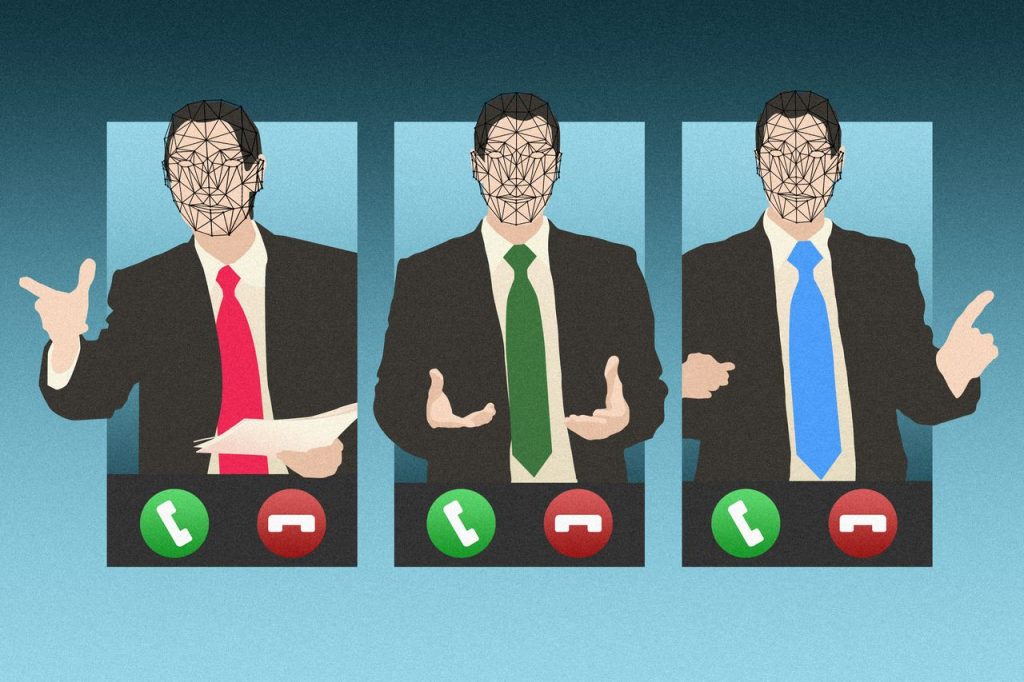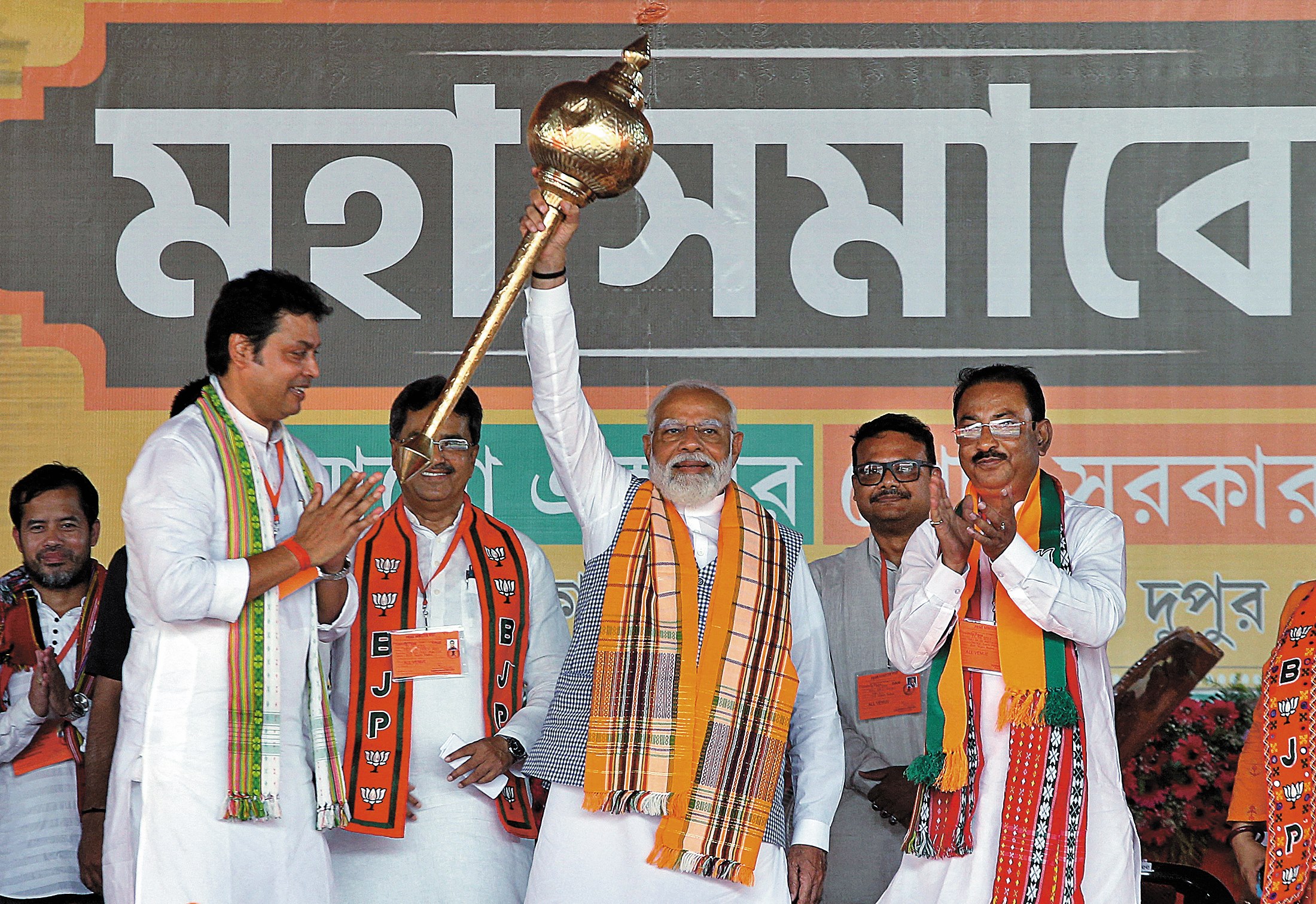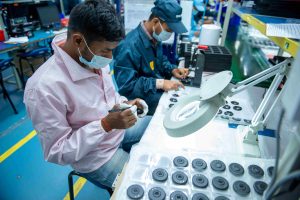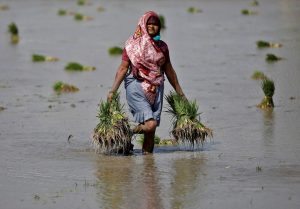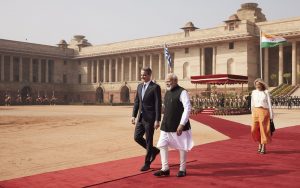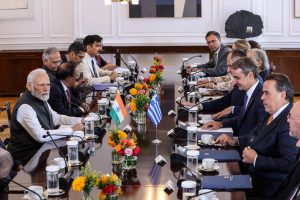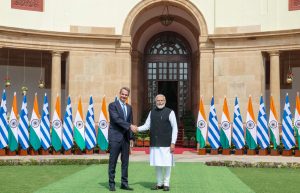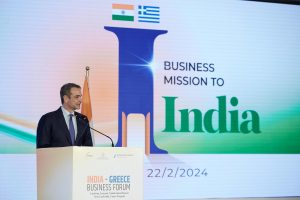NEW DELHI—The world’s largest democracy began voting Friday in an election that is widely expected to result in a third national victory for Prime Minister Narendra Modi and his ruling Bharatiya Janata Party.
The election will last six weeks and zigzag across the country as some 15 million poll workers and security personnel administer the vote to nearly 970 million registered voters. The election is a logistical feat carried out everywhere from the Himalayas to India’s forests and mangroves, and calibrated around agricultural seasons, school exams, festivals—and likely extreme heat.
The ruling party won a majority of 303 seats in the 543-seat lower house of parliament in 2019 and says it intends to do even better this time. Despite an undercurrent of economic anxiety in the country over unemployment and inflation, political analysts and surveys indicate Modi’s party is likely to emerge with a majority.
If Modi’s party wins, it would make him the first Indian prime minister to win a third consecutive term since the country’s first leader after independence, Jawaharlal Nehru . Challengers have long been able to count on a wave of anti-incumbency to kick in at some point.
Modi’s personal appeal is central to his party’s success and stems in large part from his promise to make India a stronger nation by drawing on its Hindu identity . Many Indians say they feel their country is finally being taken seriously on the world stage.
Modi’s social-media feeds are filled with his meetings with global leaders. He was invited by the Biden administration for a state visit last year and, for the second time, addressed a joint session of Congress.
“One of the most remarkable shifts we’ve seen in the past 10 years is the way in which foreign policy has become much more of a mass issue than it ever has been,” said Milan Vaishnav , director of the South Asia Program of the Carnegie Endowment for International Peace, a U.S. think tank.
“I think what Modi has been able to do is to say, ‘Look, in order to project power abroad, we need to be strong at home,’ ” he said. “And in order to be strong at home we need to have the kind of social cohesion that this kind of Hindu solidarity affords.”
Modi first came to national power in 2014 on a campaign of fighting corruption and making India more business friendly, ousting the then ruling Congress Party from power.
Congress, which was the dominant party in India for decades, has been struggling to regain its footing ever since. Political analysts say one of the opposition’s biggest problems is its leadership. Many Indians see Rahul Gandhi , Nehru’s great-grandson and the face of the Congress Party, as a privileged member of the elite, they say. That puts the party at a disadvantage against Modi, who plays up his humble upbringing as the son of a tea seller.
The decline of the Congress Party has appeared to intensify in recent years. In the last major state elections, it lost power in two large states to Modi’s party. Last year, more than two dozen opposition parties, led by Congress, teamed up to form a bloc to take on the BJP in this year’s elections. But the coalition has been marred by infighting and it trails in the polls.
Opposition politicians have, in turn, accused Modi’s government of stifling dissent and eroding democracy , a charge the ruling party denies. Last month, Congress said tax authorities froze party accounts and seized funds, hamstringing its campaign. The ruling party said it was a routine tax-recovery action.
While the opposition has struggled to gain traction, Modi has been able to galvanize his base with some of the actions he has taken in office.
This year, Modi was at the center of religious ceremonies to inaugurate a Hindu temple dedicated to Lord Ram , one of Hinduism’s most revered figures, in the north Indian town of Ayodhya. It was built on the site where a medieval mosque had stood until it was torn down by a Hindu mob, to the distress of the country’s minority Muslims. Many of Modi’s opponents have accused him of undermining India’s founding principles as a secular, pluralist republic.
Many had expected Modi’s party, which was seen as pro-business, to mark a break from the social-welfare programs of the Congress era. Instead, the party has built on initiatives begun under Congress, in many cases harnessing the power of digital payments.
“A significant part of his growth is due to his creation of a new kind of welfare state,” said Nalin Mehta , political scientist and author of “The New BJP: Modi and the Making of the World’s Largest Political Party.”
Last year, the government extended a pandemic-era, free food-grains program that gives rice or wheat to every adult household member, at a cost of about $30 billion a year. Other programs, including a home-building subsidy that has encouraged female property ownership, have helped the BJP win a growing share of women voters, an increasingly important demographic .
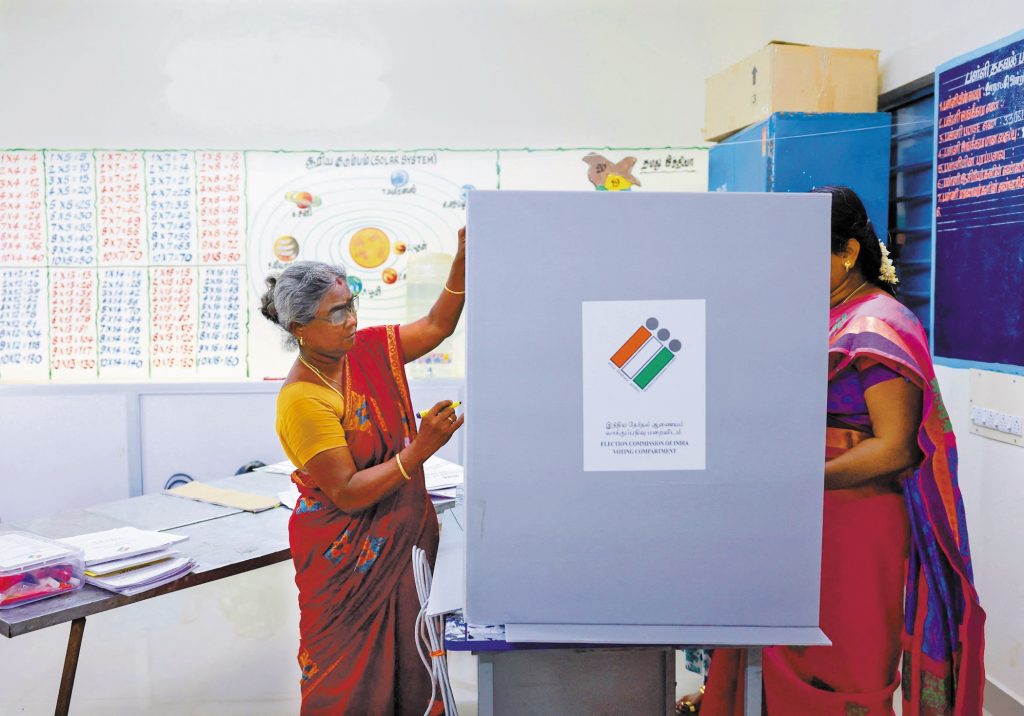
Polling officials set up a polling station at a school in Tamil Nadu, India, on Thursday. PHOTO: NAVESH CHITRAKAR/REUTERS
Still, economic concerns remain a worry for many, with Modi’s economic policies so far yielding mixed results.
Investment in infrastructure has improved connectivity, a boon for many small and large businesses. And Modi’s efforts to attract some of the manufacturing shifting away from China amid Beijing’s tensions with Washington have brought some major U.S. companies to India —most notably Apple . But economists say that India still isn’t creating as many jobs as it needs to, and many Indians remain on the farm eking out meager incomes, rather than entering the formal economy.
Youth unemployment is in the double digits , despite the government expecting to achieve GDP growth of close to 8% in the fiscal year that ended March 31.
“This whole second term has been light on economic reforms,” said Richard Rossow , an India policy expert at the Center for Strategic and International Studies, a U.S. think tank that tracks whether India is moving on measures it believes would make the economy more competitive. “They blame it on Covid. But actually most of the reforms that did happen were during Covid.”
Many voters experiencing economic woes nevertheless plan to stick with Modi.
Dilip Kumar Patidar , a 42-year-old farmer in Guda village in Madhya Pradesh state said that during Modi’s two terms his debts had risen because of food and fertilizer price increases. But he credits the local BJP candidate for improving infrastructure in his village, including building toilets and providing clean drinking water, and the Modi government for its food program.
“Though we don’t have savings, we can still manage our expenses when our food is taken care of,” he said. He also favors Modi’s promotion of Hindu culture.
Patidar’s wife Chanda Devi said she also plans to vote for Modi’s party.
“Life is not easy. But would any party make it perfect?” she said. “And who doesn’t want free food and cash handouts? Modi is giving both.”
Write to Tripti Lahiri at tripti.lahiri@wsj.com and Vibhuti Agarwal at vibhuti.agarwal@wsj.com
